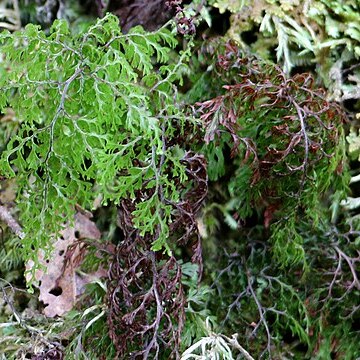Rhizome rather stout, with or without hairs; stipites rather distant. Stipes rather stout, 5-15 cm. long, not winged. Rhachis narrowly winged above, rarely throughout. Lamina 10-20 cm. long, broad-ovate to deltoid-triangular, us. acuminate, bright green, 2-4-pinnatifid; final segs linear, obtuse, distinctly to rather obscurely toothed. Sori not confined to lateral segs, slightly immersed; indusium 1-2 mm. long, ovate to suborbicular, 2-valved nearly to base, valves entire. Receptacle distinctly exserted to included.

